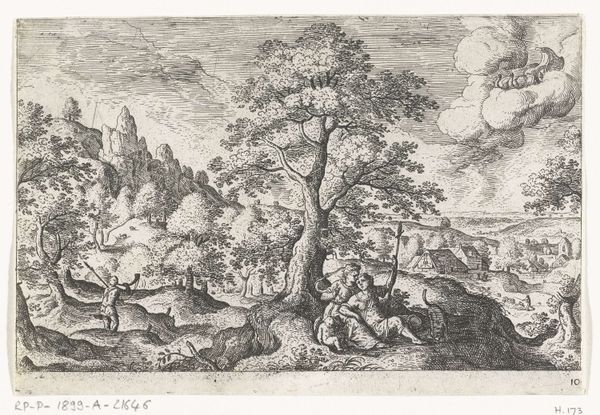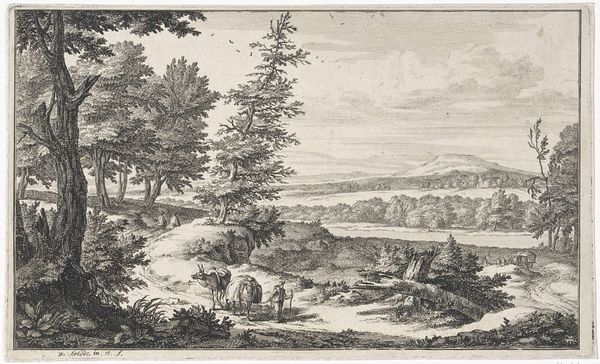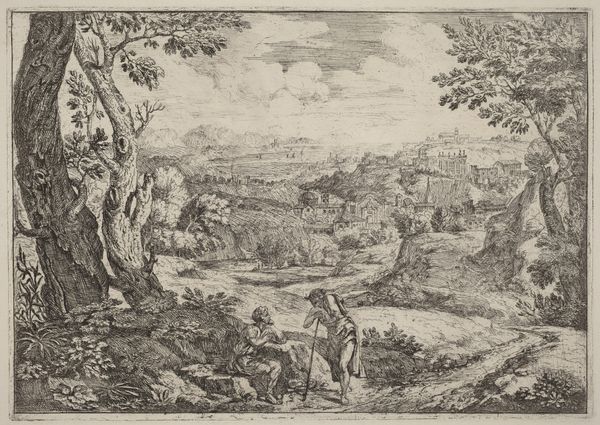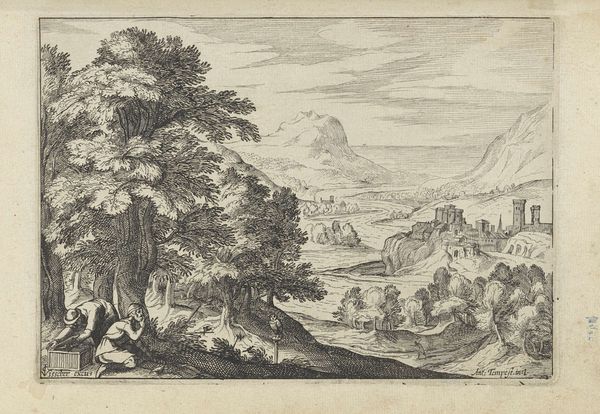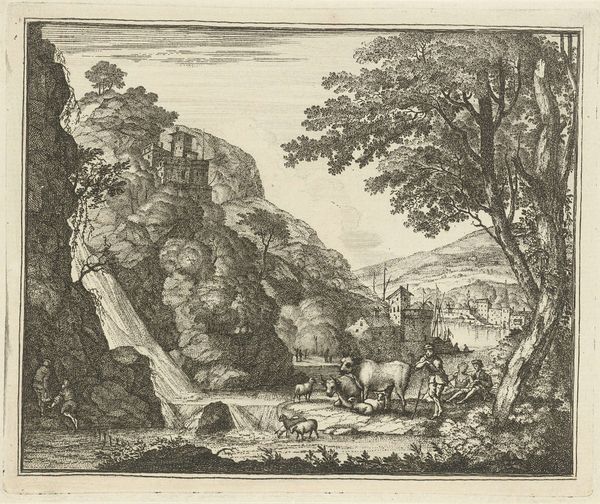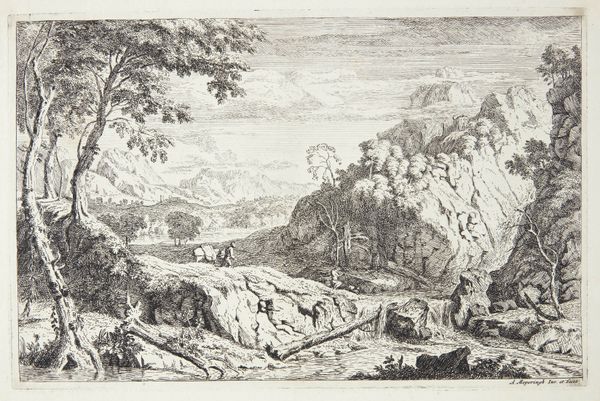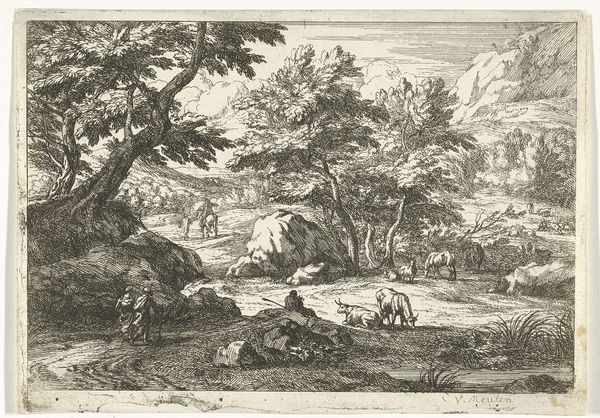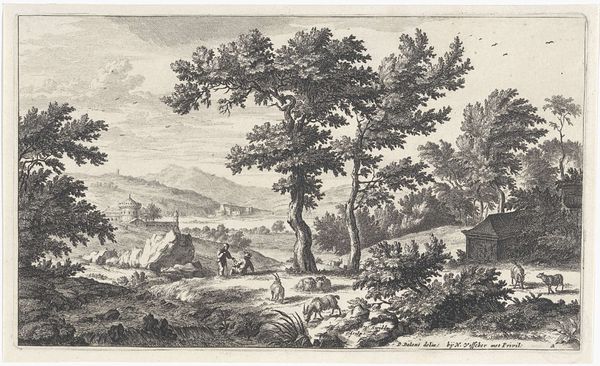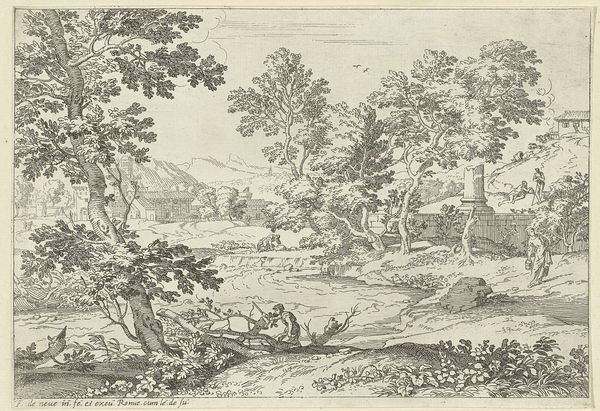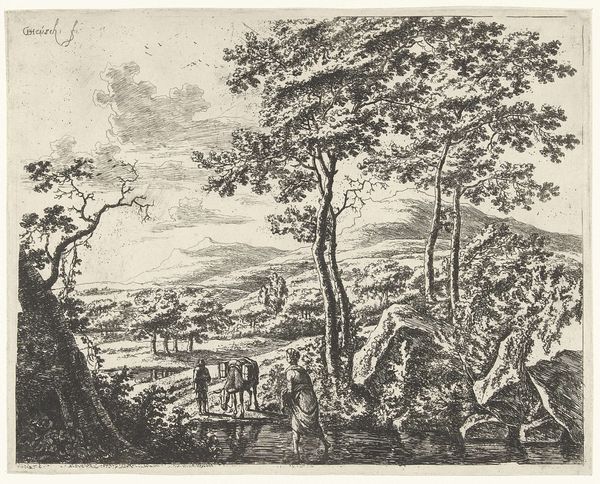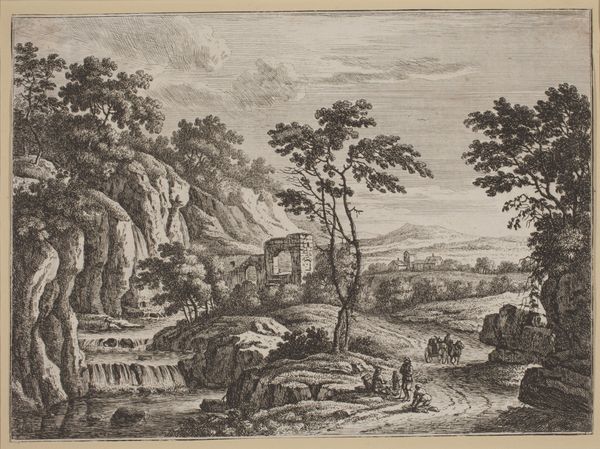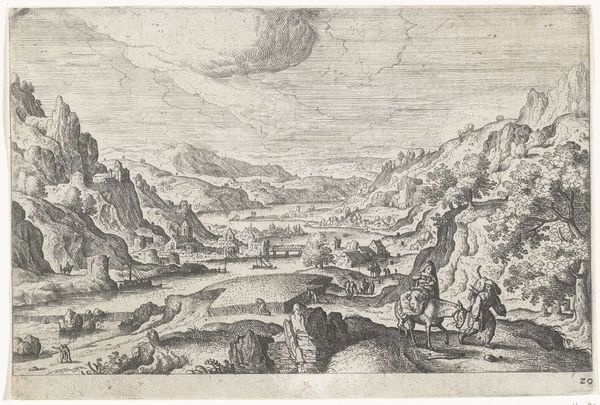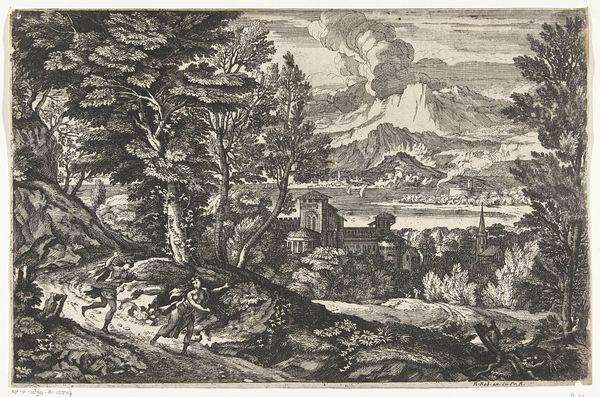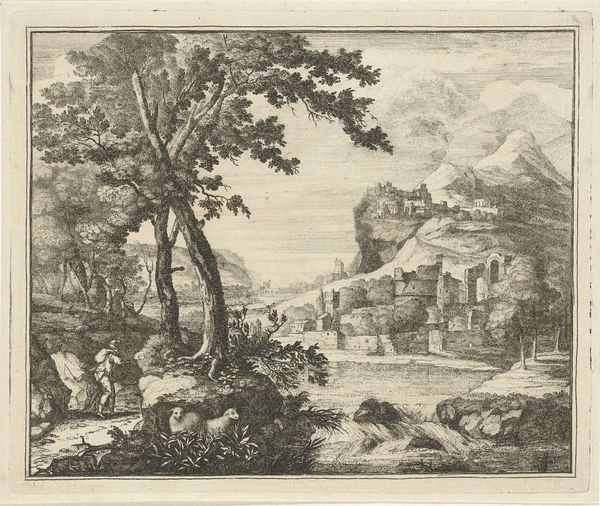
print, engraving
#
ink drawing
#
pen drawing
# print
#
old engraving style
#
landscape
#
genre-painting
#
northern-renaissance
#
engraving
Dimensions: height 125 mm, width 185 mm
Copyright: Rijks Museum: Open Domain
Curator: Immediately striking is the overall feel—almost dreamlike. The details, rendered in stark monochrome, give it an ethereal quality, wouldn't you agree? Editor: Indeed. The visual language of the composition reminds us of Tobias and the Angel; created sometime between 1550 and 1650, this print by an anonymous artist offers us a scene rich with social and cultural echoes from the Northern Renaissance. Curator: Echoes, exactly! See how the angel doesn't dominate the image? It’s embedded within the natural world, within what appears to be a genre scene of daily life. This creates a beautiful juxtaposition of the mundane and the divine. This is an engraving printed on paper, here in the Rijksmuseum. Editor: The landscape itself takes on a starring role. In that era, landscapes symbolized humanity's relationship with the divine order and also socio-political contexts. Here the small figures move across a large topography; this perspective subtly underscored humanity's relative position within the grand scheme of society. The landscape offers protection but also frames the individual's struggles within the world. Curator: Look closely; you can almost hear the water lapping against the small boats and feel the wind rustling through that large, dominating tree in the foreground. The print invites us into an emotional space as much as it does a physical one, even psychologically. What could it mean? This emphasis shifts focus, away from historical events toward the experiences of people within these settings. It invites the viewer into a shared feeling more than a history lesson. Editor: That interplay really encapsulates the broader shift happening during the Renaissance - this move towards humanism, positioning mankind's concerns at the center. Even religious narratives get subtly filtered through the lens of human experience, doesn't it? These everyday elements hint at the rising merchant class, increasing trade and new markets and societal expectations for public virtues and civic participation. It’s less about a Biblical telling than illustrating the values that underpinned the period itself. Curator: Yes, and seeing the angel not as some otherworldly figure, but as part of the community... that changes how we read the possibilities, and also read our collective potential. The print blurs boundaries; divine intervention isn’t separate but integral to the communal fabric. Editor: Considering the likely audience of this period, such imagery probably served to subtly embed notions of providence in daily routines and affairs of a growing mercantile society. Fascinating how a single image encapsulates so much social change. Curator: Precisely! A testament to art’s role not just in documenting an era but shaping how it perceived itself and its spiritual significance, all held delicately within an inky scene.
Comments
No comments
Be the first to comment and join the conversation on the ultimate creative platform.
